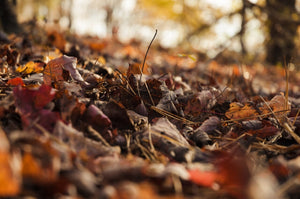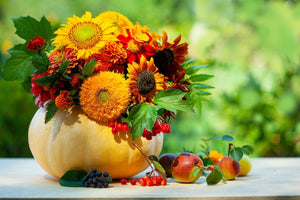Planting A Three Sisters Garden: The Ancient Secret to Growing More Food
TechniquesDid you know that growing corn, beans, and squash together is called The Three Sisters? It is an ancient method of companion planting used by Native American tribes who found that, when grown together, these three crops thrive and increase harvests.

Who are the Three Sisters?
The Three Sisters have been planted together in gardens for generations. This grouping of plants is primarily made up of corn, beans, and squash or pumpkins. Certain varieties tend to work better than others.
This method of growing crops close together is also called intercropping. Instead of having a big area of just one crop, you take advantage of each crop's growing conditions. Placing them together can make more efficient use of your gardening space.

Interested in growing The Three Sisters in your home garden? We will discuss the best options for crops, how they play their part in the trio, and go over some general tips for planting a Three Sisters garden.

Corn, the "older sister"
Let's start with the corn. Many different types of corn can be used, such as sweet corn or popcorn.
Although different corn can be used, the goal is to find corn with stalks strong enough to support the system. Corn grows straight up and allows the next plant, the beans, to grow up and around the stalk.
That is the reason the corn is referred to as the "older sister" or the supporting sister. She tends to get planted first, and is the reason why the structure of this planting method can be so successful.

Beans, the "giving sister"
The next plant involved in this system is beans. The beans needed are pole beans (beans that climb as they grow).
The vines of pole beans need something to climb up, thus the sturdy corn stalks work well for this role. The beans don't just use the corn stalks and not give back to the system - most beans have a hidden benefit to this companion planting.
Pole beans' roots have the ability to transform nitrogen in the air into usable nitrogen more readily for all of the sister plants to receive. The ability of these pole beans to fix nitrogen and enrich the soil for the whole system gets them the name the "giving sister." She is essential for the trio to grow as well as they do together.

Squash, the "protecting sister"
Even though the corn and the pole beans could be good as a pair, they are better with their third sister. This sister is squash or sometimes pumpkin plants. Squash is the better option, and the Waltham Butternut Squash is a great variety to accompany sweet corn and pole beans.
As the squash grows, it provides shade to the ground where the seeds are sprouting. This shade keeps the soil from drying out as it gets exposed to sunlight while also helping with weed control. Think of it as a living mulch.
The leaves of the squash also offer protection to the other plants because they are a bit rough or even pokey. These leaves make the corn and beans less desirable because the pests would have to step on them to get to the vegetables. This defense mechanism is why the third sister is deemed the "protecting sister."
Having this third sister completes the trio and how they are grown harmoniously.

General Tips on Growing a Three Sisters Garden
There are many ways to set up your garden, but if you plan to use the Three Sisters Gardening technique for any or all of it, there are a few things to keep in mind.
The list below is not comprehensive, but could be a good starting point when you plan your garden:
- The Three Sisters Gardening method is done in mounds. The mounds should be a pretty good size, about 12 to 18 inches tall. It also helps to think of this as a grouping method instead of long rows.
- Plant the corn first. Usually, about 6 inches apart is the best option for these corn seeds. You'll want to plant more seeds than you want stalks. We recommend planting 6 or 7 seeds because that will leave you with 3 or 4 actual corn stalks.
- Plant the beans and squash next. After the corn sprouts and has a good start of at least 6 inches, you can plant the pole beans and butternut squash. The beans can be planted about 6 inches from the corn, and then the squash can be planted around the base of the mound. Recommended numbers for the pole beans are the same number as the corn, but for the squash, you only need about 4 seeds. All of these seeds are assumed to be planted in higher numbers than actual plants are expected to grow.
- Water your garden. You will water your corn, squash, and beans in a similar fashion to all vegetables. They will need about one inch of water per week. For more tips on watering, check out our post about watering.
- Weed your garden. Maintain your garden and help move vines, or encourage the pole beans as they start climbing. As your plants begin to grow, you will become more accustomed to making changes and figuring out the best options for your region, garden, and plants.
Ready to get started?
Generations have used this planting technique, and it works. We are excited to help you grow a Three Sisters garden at Sow Right Seeds.
You could use any combination of corn, pole beans, and squash. We like the combination of our three top reliable heirloom seeds. Sweet Corn, Kentucky Wonder Pole Beans, and Waltham Butternut Squash.
This traditional way of growing squash, corn, and beans has a long history. You can read more about this ancient intercropping method in this article from the National Agricultural Library: The Three Sisters of Indigenous American Agriculture.
There are so many gardening methods out there, and this is a fun one to try. As you plan your garden, we hope the Three Sisters Gardening method will be at the top of your list.
Happy Planting!
Written by Teresa Chandler
Popular Posts
-

What is Leaf Mold? 8 Reasons You Need to Make This Garden Gold!
-

Our Favorite Fall Flowers to Plant for Autumn Blooms






Leave a comment